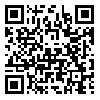Volume 72, Issue 8 (November 2014)
Tehran Univ Med J 2014, 72(8): 546-554 |
Back to browse issues page
Download citation:
BibTeX | RIS | EndNote | Medlars | ProCite | Reference Manager | RefWorks
Send citation to:



BibTeX | RIS | EndNote | Medlars | ProCite | Reference Manager | RefWorks
Send citation to:
Borna H, Rafati S, Haj Ebrahim Tehrani F. The frequency of clinical and laboratory findings of hypernatremia and factors affecting its severity in term newborns. Tehran Univ Med J 2014; 72 (8) :546-554
URL: http://tumj.tums.ac.ir/article-1-6347-en.html
URL: http://tumj.tums.ac.ir/article-1-6347-en.html
1- Department Pediatric Shahed University, Mostafa Khomeini Hospital, Tehran, Iran , hbborna@yahoo.com
2- Department Pediatric Shahed University, Mostafa Khomeini Hospital, Tehran, Iran
2- Department Pediatric Shahed University, Mostafa Khomeini Hospital, Tehran, Iran
Abstract: (5560 Views)
Background: Hypernatremic dehydration in neonate is a serious potentially life treating can damage the central nervous system. The aim of this study was to determine the clinical and laboratory signs of hypernatremic dehydration in term infant.
Methods: A cross sectional study was performed from April 2010 to March 2012 in 111 neonates with sodium>145 mmol/l who were admitted at the Mostafa Khomeini and Hazrat Zainab Hospitals in Tehran, Iran. The incidence of clinical and laboratory findings and relationship between some risk factors influencing the severity of hypernatremia were reviewed. The patients were subdivided in two groups: Na<150 mmol/l (group 1) and Na≥150 mmol/l (group 2). Premature infants less than 37 weeks, congenital malformations, formula fed, sepsis and organic disease were excluded. The Student’s t-test, Mann-Whitney U test and Chi-square test were used for statistical data analysis. P<0.05 were considered significant.
Results: One hundred and eleven of 2015 (5.2%) patients had hypernatremia. Fifty eight (52.25%) infants were male and sodium ranging was from 146 to 175 mmol/l with an average of 150.3 mg/dl. The most common clinical findings in both groups 1 and 2 were lethargy (81%, 84.5%), fever (74.1%, 73.6%), poor feeding (67.3%, 73.6%), weight loss (60.2%, 84.9%) and a decrease in urine volume (31%, 52.8%). Oliguria, restlessness, seizures, weight loss, orange urine, pathologic hyperbilirubinemia were significantly higher in group 2 than group 1 (P<0.05). There was correlation between severity of hyprnatremia and weight (P=0.022) and age of neonate (P=0.046), time of first feeding (P=0.016), serum creatinie>1.5 mg/dl (P=0.016) and bilirubin level (P=0.01). The relationship between type of nutrition, type of delivery, parity, maternal age, sex, gestational age, discharge, maternal education level were not significant.
Conclusion: Sufficient attention to the warning signs of hypernatremia such as lethargy, weight loss, oliguria, poor feeding, fever, restlessness and determination of serum sodium levels in suspected cases can significantly reduce the potential complications of hypernatremic dehydration in neonate.
Type of Study: Original Article |
Send email to the article author
| Rights and permissions | |
 |
This work is licensed under a Creative Commons Attribution-NonCommercial 4.0 International License. |





